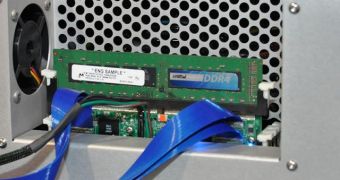DDR4 is the next level in the development of dynamic random access memory, one that the remaining memory chip makers hope will restore some of their lost glory. Crucial has proven to be one of the fastest moving company in this matter.
In fact, Crucial is so eager to see DDR4 memory modules in stores that it might go out on a limb and completely ignore the roadmap of everyone else.
Last year, analysts took a look at the memory industry and the PC market, in order to make a forecast of when and what will happen.
Their conclusion was that DDR4 memory would only become available for sale in 2014.
Crucial wants to have at least one module or kit ready before that, which is why it brought a DDR4 module to the Consumer Electronics Show (CES 2013) and said that interested parties will get it in the third or fourth quarter.
“With DDR4 data rates already twice that of DDR3 when it was introduced, Crucial Ballistix is the ideal showcase for Micron’s latest generation of DRAM,” said Jim Jardine, director of DRAM product marketing at Crucial.
“Other benefits, including reduced voltage compared to DDR3, will make DDR4 an important advancement in memory technology that will benefit computing systems that range from the personal computer to the data center.”
When putting together the memory modules, Crucial used Micron 4Gb chips in arrays of eight. These chips are built on the 30nm manufacturing process technology.
The modules work at 1.2V, 20% lower voltage than the minimum achievable through DDR3. They bear the Ballistix DDR4 name and have an effective clock speed of 2133 MHz.
And here some may jeer and say that there are DDR3 modules that can go higher, and they would be right. However, DDR3 can only go so high thanks to overclocking, while 2133 MHz is the base speed of DDR4 and, overall, no strain at all on the memory technology. DDR4 overclocking will make DDR3 tweaks seem insignificant.
Crucial did not share the hardware specs of the Windows test bed currently in Las Vegas.

 14 DAY TRIAL //
14 DAY TRIAL //